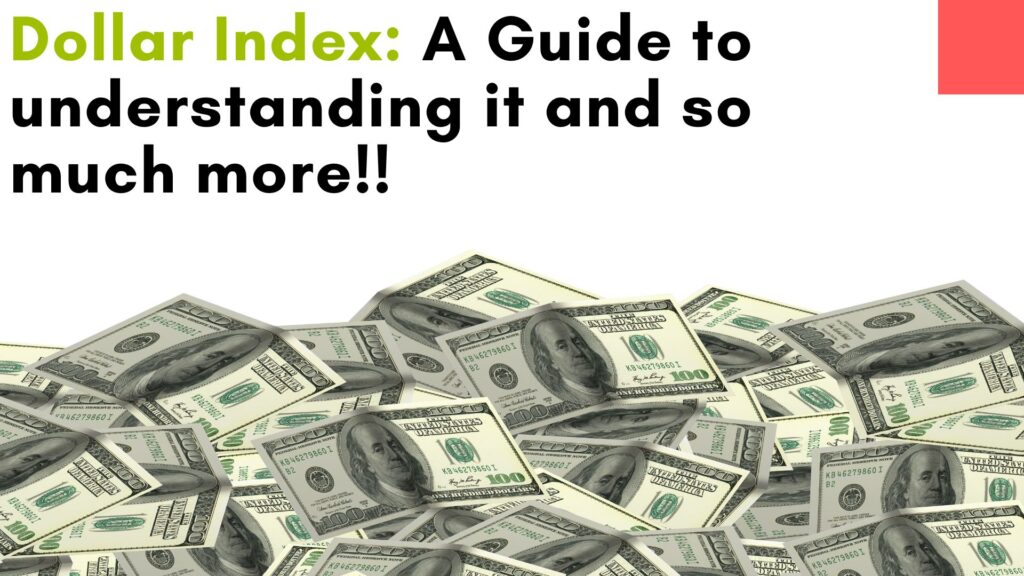
The global financial landscape is a complex web of interconnected economies, currencies, and markets. Among the many factors that influence this intricate network, the Dollar Index stands out as a crucial indicator for investors, policymakers, and traders alike.
As traders we’ve all heard about the dollar index. From the name we could infer as to what this is but to be more specific, it has a lot of layers within.
So through this blog, let’s delve into the significance of the Dollar Index and how it impacts the global market.
What is the Dollar Index?
The Dollar Index, also known as the U.S. Dollar Index (USDX), is a measure of the value of the United States dollar relative to a basket of foreign currencies. It was introduced in 1973 by the Intercontinental Exchange (ICE) as a way to gauge the overall strength or weakness of the U.S. dollar against its major trading partners. The index is weighted according to the trade volume of each currency in U.S. international trade.
The Dollar Index is computed by taking a geometric mean of the exchange rates between the U.S. dollar and six major currencies: Euro (EUR), Japanese yen (JPY), British pound sterling (GBP), Canadian dollar (CAD), Swedish krona (SEK), and Swiss franc (CHF).
Impact on the Global Market
The dollar is a strong currency and the dollar index has a significant impact on global economy due to this as well.
Trade and Commerce:
The U.S. dollar is the world’s primary reserve currency and plays a dominant role in international trade. The Dollar Index serves as a key indicator of the U.S. dollar’s value, affecting the competitiveness of U.S. exports and imports. A stronger dollar can make U.S. exports more expensive for foreign buyers, potentially leading to a trade deficit, while a weaker dollar can boost exports and reduce the trade deficit.
Commodity Prices:
Many commodities, including crude oil, gold, and industrial metals, are priced and traded in U.S. dollars. As a result, fluctuations in the Dollar Index can impact commodity prices globally. A stronger dollar tends to lead to lower commodity prices, as it requires fewer dollars to purchase the same amount of commodities, and vice versa.
Foreign Investment:
The Dollar Index influences the attractiveness of U.S. assets to foreign investors. A stronger dollar may entice foreign investors to purchase U.S. bonds, stocks, and real estate, potentially boosting capital inflows into the U.S. Conversely, a weaker dollar could make U.S. assets less appealing to foreign investors.
Central Bank Policies:
Central banks around the world closely monitor the Dollar Index as it influences their monetary policy decisions. For countries with currencies pegged to the U.S. dollar or those with a significant trade relationship with the U.S., the Dollar Index can guide central banks in adjusting interest rates or implementing other monetary measures.
Risk Sentiment:
The Dollar Index often exhibits an inverse relationship with risk sentiment. In times of global economic uncertainty or geopolitical tensions, investors tend to flock to safe-haven assets, including the U.S. dollar, leading to an increase in the Dollar Index.
Conclusion
The Dollar Index is a vital tool for market participants to understand the strength and stability of the U.S. dollar in relation to other major currencies. Its impact on global trade, commodity prices, foreign investment, central bank policies, and overall risk sentiment make it a critical indicator in navigating the complexities of the global market.
As investors and policymakers continue to keep a close eye on the Dollar Index, its movements will undoubtedly shape the course of the international financial landscape.
We hope you loved this blog. We’ll be back with more content like this soon.
Until then, Happy Trading!!
Commodity Samachar
Learn and Trade with Ease
